skip to main |
skip to sidebar
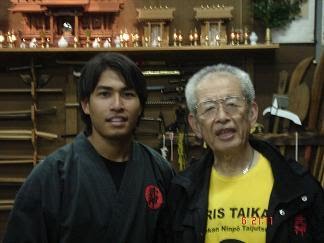
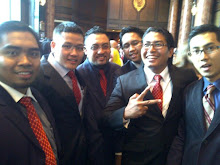


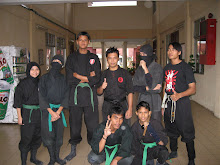

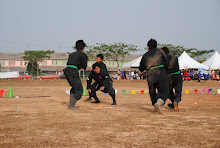

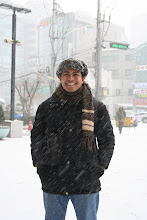
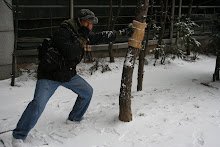





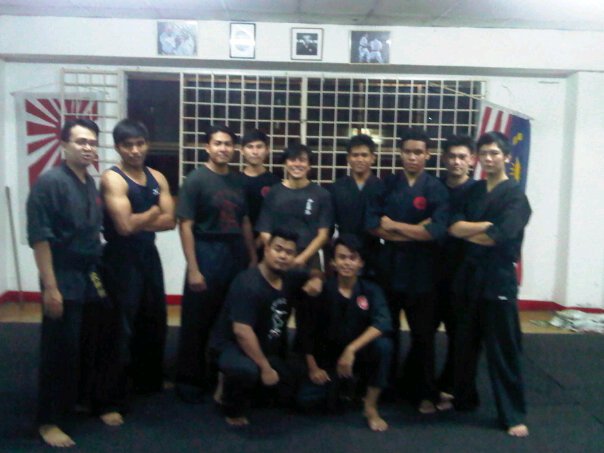
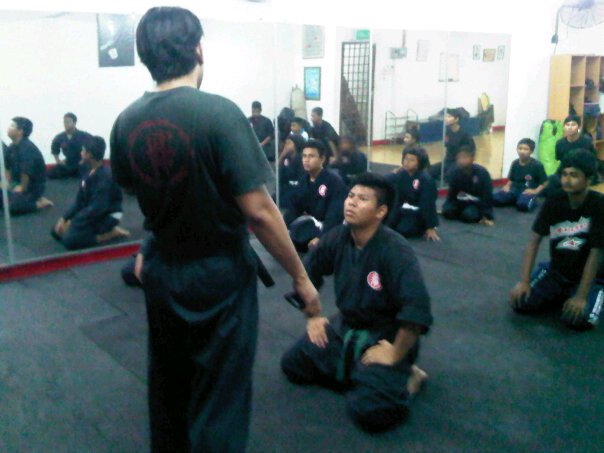
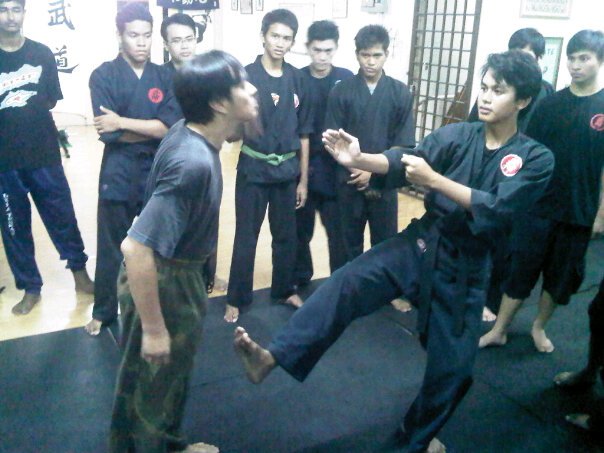
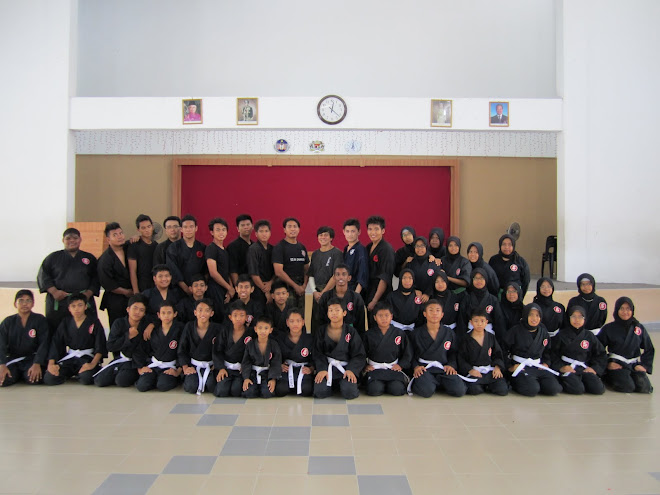

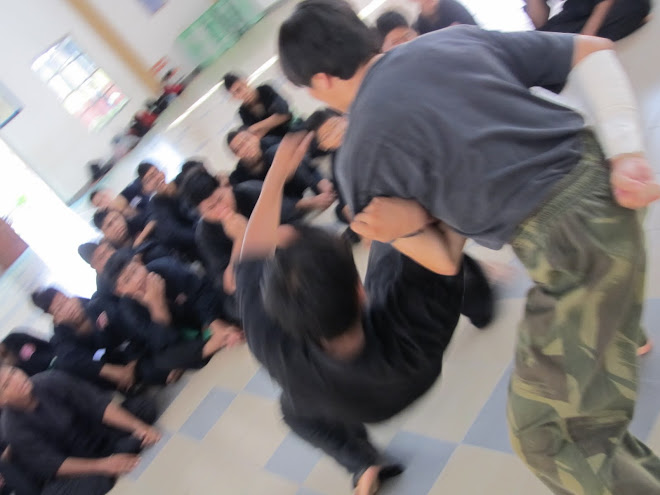
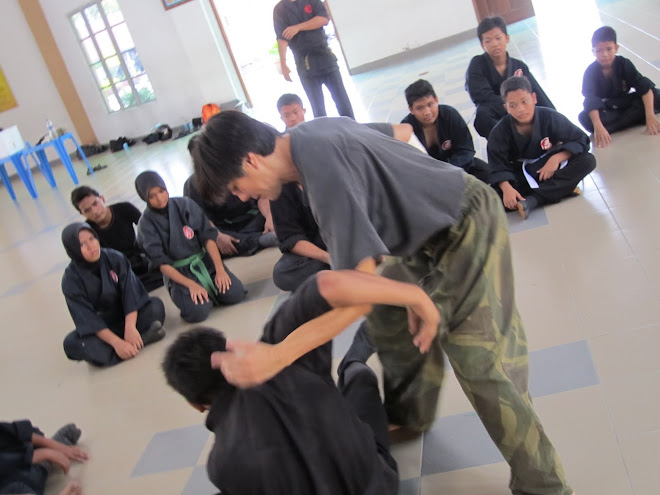

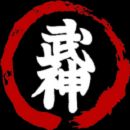

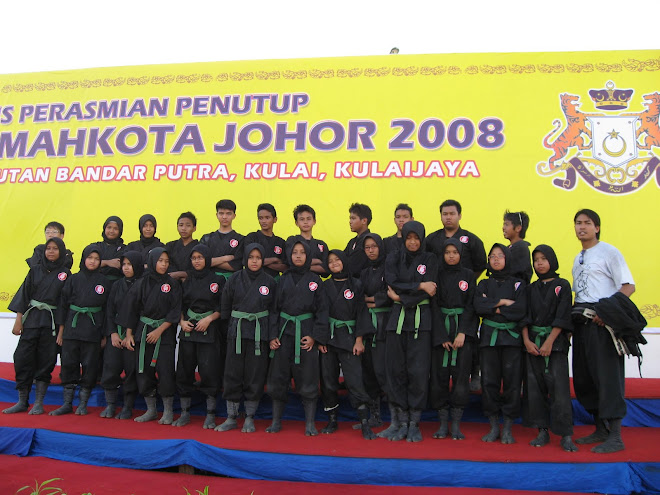



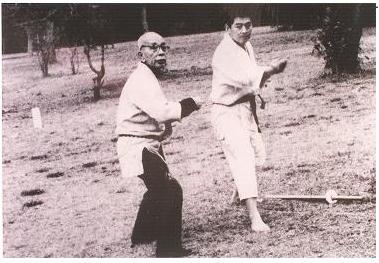
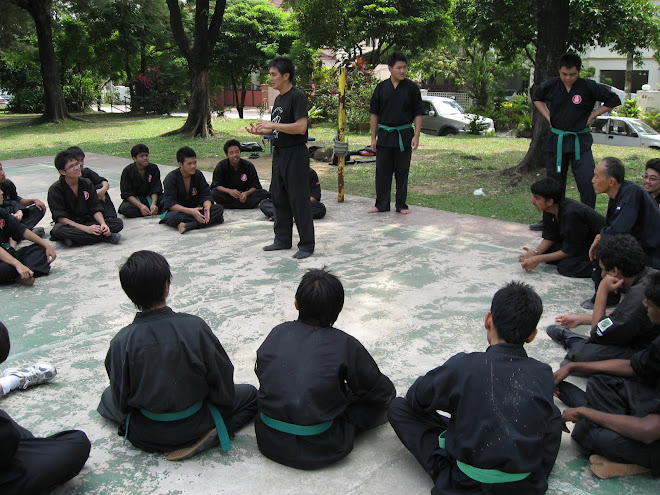
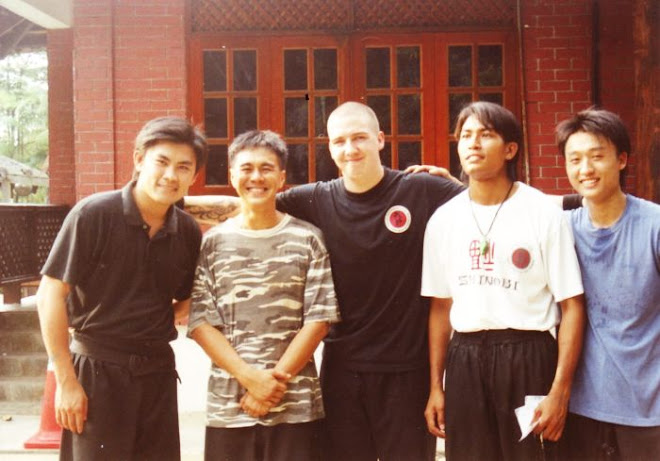
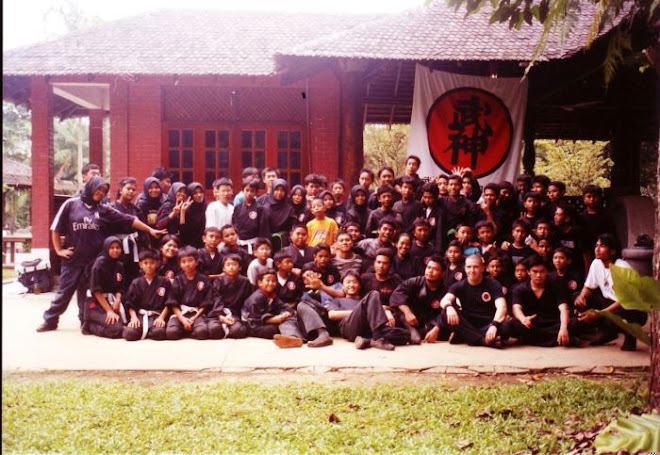
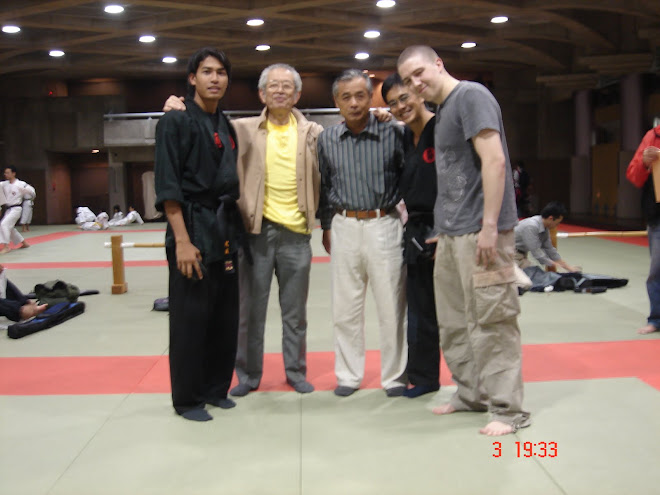
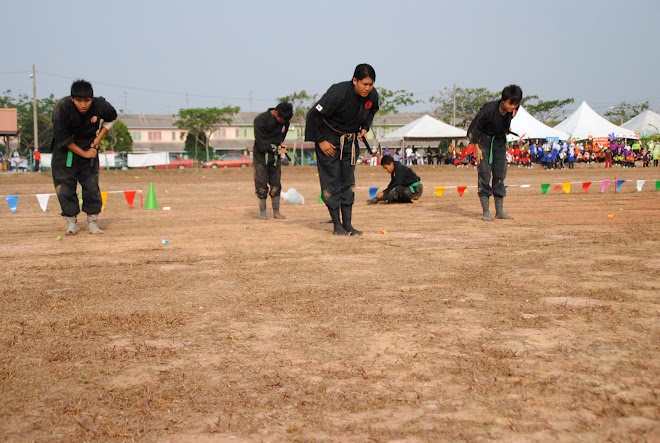
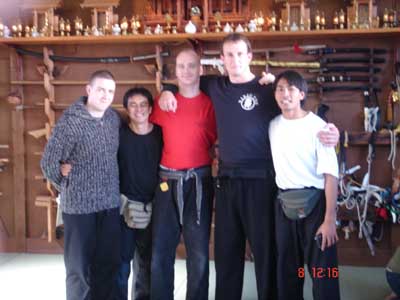


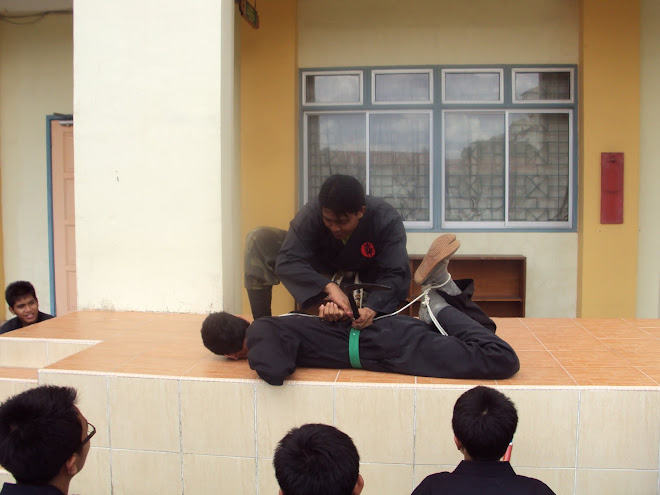
BUJINKAN JOHOR
23-03,susur 1 persiaran larkin perdana 80350 jb
Training with Hatsumi soke,34th grandmaster in Hombu Dojo Japan
About the dojo
The Bujinkan is the only association in the world which teaches authentic Ninja arts from the time of feudal Japan. It is recognized by both the Japanese Government and the Imperial Family and possesses the 9 ancient ninja and samurai ryuha passed down from Soke (grandmaster) to Soke.The name of our Malaysian Dojo is Bujinkan Hachimon Dojo Malaysia.
* Bujinkan means "Hall of Divine Spirit Warriors"
* Hachimon in Japanese means "Eight Gates" which consists of
[1] Ninja no Kiai
[2] Ninja no Taijutsu
[3] Ninja no Ken
[4] Ninja no Yari
[5] Ninja no Shuriken
[6] Kajutsu
[7] Yugei
[8] Kyomon
* Dojo means "The place of the way" or "Training Hall"
At present, the Bujinkan Hachimon Dojo is led by Mr. James Lee P. K. and his senior students. The members train at different locations both outdoors and indoors.
Seminars are conducted by experienced instructors from overseas to increase the knowledge and Taijutsu skill of the members.
At the same time, the Dojo also organizes training camps, self-defense sessions, trips and in-house friendlies for members.
The history
The exact origins of the Ninja and the art of Ninjutsu could not be traced exactly. However, important historians generally accept that Ninjutsu came into being through religious and political upheaval around the end of the 6th century A.D. in Japan. Political refugees, priests and other intellectuals from China wandered and come to settle in the mountainous regions of Central Japan in their bid to escape the political turmoil due to the change of dynasty. They brought with them fighting arts, medicinal, philosophical and other skills.
Japanese ronins (master-less samurai), yamabushis (mountain priests) and other Japanese political and war refugees escaping from the turbulent wars of the Japanese courts also made their way into the mountains.
At the end of the Tang Dynasty (circa A.D. 900), a large input of military strategies, religious philosophies, folklore, cultural concepts and medical practices were brought over once again to Japan by fleeing refugees.
Isolated for years in the wilderness, whole families and clans begin to emerge through intermarriages, generations lived died. Their knowledge, martial skills, beliefs and philosophies blended and evolved into what is known as Ninjutsu today.
At the end of the Heian period (1185 A.D.) the central government weakened and many political factions come into being. There were conflicts and unrest. This period is known as the Kamakura period, (1192-1333 A.D.), which is also known as "the Golden Period of Ninjutsu".
The Daimyos (Lords) would call upon the shinobi warriors (Ninjas) to spy and occasionally get rid of their rivals. The Ninja clans would only do so after considering deeply all factors and which of the lords can preserve their self-existence in turbulent Japan.
The regions of Iga and Koga became famous for producing great Ninja families. As peace approached in the Tokugawa period (1603 A.D.), Ninjutsu started to decline. Many clans put aside and forget their fighting skills. Only a few continued to practice.
The one remaining Koga style survived until the 1960's. Unfortunately, the master Fujita Seiko and his students perished in a car crash. This leave only the Iga style inherited by Sensei Takamatsu Toshitsugu Uoh, who handed all the grandmasters of nine traditional Ninja and Samurai schools to Soke Masaaki Hatsumi, the founder of the Bujinkan Dojo International.
The "Ninja Boom" of the 1980's was taken advantage of by many people who claimed to have links to historical Ninja families of the past, present and even non-existing ones. Some used false or real names of others with high ranks to attract members lacking in information. Others would join the Bujinkan Dojo for a short period of time to pick up some skills before disappearing elsewhere to teach while using the Bujinkan name illegally. This happens everywhere.
Ninjutsu in Malaysia
Authentically speaking, Ninjutsu started in Malaysia when Mr. William Boesen (8th Dan), a Danish expartriate and ex-soldier met up with a group of Malaysians training in Budo (Ninpo) Taijutsu on their own somewhere in the 1990's.
He gave them advance and intensive training in all aspects of Ninjutsu. It was him (with assistance from Mr. Justyn Olby and Mr. Marcus Snoddy) who graded and delivered hand written certificates from Soke Maasaki Hatsumi to the Malaysian members.
Mr. Boesen left for home in 1999. One of our members, Mr. James Lee P.K. was given the task of furthering Bujinkan Budo (Ninpo) Taijutsu, (or in short Bujinkan Ninjutsu) in Malaysia.
Training
The official name for our art is Budo Ninpo Taijutsu. Our art may be divided into three main areas:
Taijutsu - Unarmed combat
Ninkijutsu - Ninja weaponry
Kuji-in - Sensory training for the mind & body
Taijutsu, in direct translation means, “body techniques”. Through this, we understand that whatever movement that we make with our body involves Taijutsu. Taijutsu includes:
Dakentaijutsu (striking techniques)
- Koppojutsu (striking against bones)
- Koshijutsu (striking against muscles)
Jutaijutsu (soft body / grappling techniques)
- Nagewaza (throws)
- Shimewaza (strangulations)
Taihenjutsu (body changing techniques)
- Ukemi (breakfalls)
- Kaiten (rolls)
- Hichojutsu (leaps & jumps)
- Sanpo (walking)
Taijutsu basics come from the 9 Bujinkan Ryuha (for the list of Ryuha, please refer to our Ninjutsu Geneology):
1. Sanshin no Kata (Gyokko Ryu):
. Chi no Kata - Earth
· Sui no Kata - Water
· Ka no Kata - Fire
· Fu no Kata - Wind
· Ku no Kata - Void
2. Kihon Happo (Gyokko Ryu):
· Koshi Kihon Sanpo:
- Ichimonji no Kata
- Hicho no Kata
- Jumonji no Kata
. Torite Kihon Kata
- Omote Gyaku
- Omote Gyaku Tsuki
- Ura Gyaku
- Musha Dori
- Ganseki Nage
3. Shinden Kihon (Ten Chi Jin Ryaku no Maki):
The complete number of basic techniques that form the base of the 9 Bujinkan Ryuha.
4. Ryuha Techniques & Henka’s.
More techniques and kata from the traditional schools with their own characteristics and specialities.
Good Taijutsu does not mean mastering many techniques, instead is the ability to judge:
· Ma-ai - The distance between you and all else around you (ie. opponent’s weapons)
· Timing - The execution of each technique at the right moment (not too early or too late)
· Nagare - Flowing from one action to another in a single movement
Ninjutsu
From Wikipedia, the free encyclopedia
Jump to: navigation, search
This article is about a Japanese martial art. For fictional depictions and use, see Ninja in popular culture.
Ninjutsu
(忍術) Ninja kanji.svg
The kanji for "ninja."
Also known as Ninjitsu; Ninpō
Focus Multi-discipline
Hardness Non-competitive
Country of origin Japan Japan
Creator No single creator
Parenthood Historic
Ninjutsu (忍術?) sometimes used interchangeably with the term ninpō (忍法?) is the martial art, strategy, and tactics of unconventional warfare and guerrilla warfare as well as the art of espionage purportedly practiced by the shinobi (commonly known outside of Japan as ninja).[1]
While there are several styles of "modern ninjutsu," the historicity and lineage of these styles is disputed. [2]
Contents
[hide]
* 1 Etymology
* 2 History
* 3 18 Skills
* 4 Modern schools
* 5 Weapons & Equipment
* 6 See also
* 7 Notes
* 8 References
* 9 External links
[edit] Etymology
The main character nin (忍?) is a phono-semantic compound composed of two greater characters. The upper character ha or toh (刃?) is the phonetic indicator; its meaning of "edge of the sword" is therefore irrelevant here. The lower character kokoro or shin (心?) means "heart" or "soul". The compound means "stealth", "secrecy", "endurance", "perseverance", and "patience".[3] Jutsu (術?) means "art" or "technique". Pō (法?) meaning "knowledge", "principle" when found with the prefix "nin" carries the meaning of ninja arts, higher order of ninjutsu.
[edit] History
Ninjutsu was developed by groups of people mainly from the Iga Province and Kōka, Shiga of Japan. Throughout history the shinobi have been seen as assassins, scouts and spies. They are mainly noted for their use of stealth and deception. They have been associated in the public imagination with activities that are considered criminal by modern standards. Throughout history many different schools (ryū) have taught their unique versions of ninjutsu. An example of these is the Togakure-ryū. This ryū was developed after a defeated samurai warrior called Daisuke Togakure escaped to the region of Iga. Later he came in contact with the warrior-monk Kain Doshi who taught him a new way of viewing life and the means of survival (ninjutsu).[4].
Ninjutsu was developed as a collection of fundamental survivalist techniques in the warring state of feudal Japan. The ninja used their art to ensure their survival in a time of violent political turmoil. Ninjutsu included methods of gathering information, and techniques of non-detection, avoidance, and misdirection. Ninjutsu can also involve training in disguise, escape, concealment, archery, medicine, explosives, and poisons.[5]
Skills relating to espionage and assassination were highly useful to warring factions in feudal Japan. Because these activities were seen as dishonorable, Japanese warriors hired people who existed below Japan's social classes to perform these tasks. These persons were literally called "non-humans" (非人, hinin?).[6] At some point the skills of espionage became known collectively as ninjutsu, and the people who specialized in these tasks were called shinobi no mono.
[edit] 18 Skills
Masaaki Hatsumi demonstrating his techniques on Mind, Body & Kick Ass Moves
In Japanese Ninja Jūhakkei, that according to Bujinkan[7] members the eighteen disciplines (jūhakkei < jūhachi-kei) were first stated in the scrolls of Togakure-ryū. Subsequently they became definitive for all ninjutsu schools by providing total training of the warrior in various fighting arts and agarter.
Ninja jūhakkei was often studied along with Bugei Jūhappan (the "18 samurai fighting art skills"). Though some are used in the same way by both samurai and ninja, other techniques were used differently by the two groups.
The 18 disciplines are:[8]
1. Seishin-teki kyōkō (spiritual refinement)
2. Bōjutsu (stick and staff fighting)
3. Shurikenjutsu (throwing shuriken)
4. Sōjutsu (spear fighting)
5. Naginatajutsu (naginata fighting)
6. Kusarigamajutsu (kusarigama fighting)
7. Kayakujutsu (pyrotechnics and explosives)
8. Hensōjutsu (disguise and impersonation)
9. Shinobi-iri (stealth and entering methods)
10. Bajutsu (horsemanship)
11. Sui-ren (water training)
12. Bōryaku (tactics)
13. Chōhō (espionage)
14. Intonjutsu (escaping and concealment)
15. Tenmon (meteorology)
16. Chi-mon (geography)
17. Taijutsu (Unarmed Combat)
18. Kenjutsu (sword fighting)
[edit] Modern schools
Main article: Schools of Ninjutsu
There are a number of modern schools of martial arts self-identifying as practicing ninjutsu.[citation needed] Neo-ninja is a term that refers to modern martial arts schools which claim to teach elements of the historic ninja of Japan, or base their school's philosophy upon traits attributed to the historic ninja of Japan.[citation needed]
[edit] Weapons & Equipment
The following tools may not be exclusive to the Ninja, but they are commonly associated with the practice of Ninjutsu.
* Kaginawa, or Grappling hook (facilitates stealth entry and Hojojutsu)
* Hanbo (quarterstaff)
* Kama (weaponized farming blade)
* Kunai (multi-purpose tool)
* Kusarigama and Kyoketsu shoge (composite blade weapons)
* Manriki, Manriki-gusari and Kusarifundo (chain weapons)
* Ninjato (disguised short sword)
* Shuriken ("throwing stars" or darts)
* Tekagi-shuko and Neko-te ("claw" weapons)
[edit] See also
* Kunoichi
* Neo-ninja
[edit] Notes
1. ^ Hayes, Stephen. “The Ninja and Their Secret Fighting Art.” ISBN 0804816565, Tuttle Publishing, 1990
2. ^ Skoss, Diane (ed.); Beaubien, Ron; Friday, Karl (1999). "Ninjutsu: is it koryu bujutsu?". Koryu.com. http://koryu.com/library/ninjutsu.html. Retrieved 2007-01-01.
3. ^ Hayes, Stephen. "The Mystic Arts of the Ninja." 1985: 2
4. ^ Hayes, Stephen. “The Ninja and Their Secret Fighting Art.” 1981: 18-21
5. ^ Hatsumi, Masaaki. “Ninjutsu: History and Tradition.” June 1981
6. ^ Draeger, Donn F. (1973, 2007). Classical Bujutsu: The Martial Arts and Ways of Japan. Boston, Massachusetts: Weatherhill. pp. 84–85. ISBN 978-0-8348-0233-9.
7. ^ "Bujinkan Dojo - Soke Masaaki Hatsumi". http://www.bujinkan.com. Retrieved 2007-06-05.
8. ^ "Togakure Ryu Ninjutsu". http://www.ninjutsu.ws/ninjutsu/togakure-ryu-ninjutsu. Retrieved 2008-01-30.
[edit] References
* Essence of Ninjutsu by Masaaki Hatsumi (ISBN 0-8092-4724-0)
* Notable American Martial Artists by Callos, Tom. Black Belt Magazine (May 2007) 72-73
* Ninjutsu: History and Tradition by Masaaki Hatsumi (ISBN 0-86568-027-2)
* Ninpo: Wisdom for Life by Masaaki Hatsumi (ISBN 1-58776-206-4 or 0972773800)
* The Ninja and their Secret Fighting Art by Stephen K. Hayes (ISBN 0-8048-1656-5)
* Wingspan: Culture-Society-People in Japan, Where Have All the Ninja Gone? by Thomas Dillon (September, 2007 No.459)
* Historical group image editorial staff compilation by Kuroi Hiroshi optical work (ISBN 978-4-05-604814-8)
* The Last of the Ninja by Thomas Dillon
* Secret Guide to Making Ninja Weapons, by Yamashiro Toshitora, Butokukai Press, 1986, ISBN 978-9994291311
* A Story of Life, Fate, and Finding the Lost Art of Koka Ninjutsu in Japan by Daniel DiMarzio (ISBN 978-1-4357-1208-9)
* 'Techniques that made ninjas feared in 15th-century Japan still set the standard for covert ops.' Bertrand, John. (2006). 23(1), pp. 12-19. Retrieved on July 11, 2008 from Academic Search Premier database.
* Secrets from the Ninja Grandmaster (Rev. Ed.). Hayes, Stephen K. and Masaaki Hatsumi. (2003). Boulder, Colorado; Paladin Press.
JONIN: The jonin was the leader of the ninja clan they belonged to, their identity guarded by secrecy, no one knew who this person was, at most times, not even the chunin. This was to protect the ninja agents and the clan. They would be the ones to decide a mission and pass on its particulars to the chunin.
CHUNIN: The chunins were the seniors of the ninja groups, responsible for taking the orders from the Jonin and employing the ninja genin agents into missions. Most chunin were the once responsible for mission designs, mission guides, setting up strategy. The chunin was also the on who helped in the training and selecting of the best ninja agents for the job.
GENIN: The genin was the ninja agent, sent out to perform the duties they would be employed to do. At stage in a ninja life, is during their young adult-hood, after their elders felt they were ready to undertake ninja missions. Most ninja at this stage either made it or didn’t, meaning they died during the course of their missions.
"Ninjutsu is not something which should be used for personal desires. It is something, which should be used when no other choice is available, for the sake of one's country, for the sake of ones lord, or to escape personal danger. If one deliberately uses it for the sake of personal desires, the technique will indeed fail totally."
- Sandayu Momochi
Iga Ninja Jonin
16th Century
* Bujinkan means "Hall of Divine Spirit Warriors"
* Hachimon in Japanese means "Eight Gates" which consists of
[1] Ninja no Kiai
[2] Ninja no Taijutsu
[3] Ninja no Ken
[4] Ninja no Yari
[5] Ninja no Shuriken
[6] Kajutsu
[7] Yugei
[8] Kyomon
* Dojo means "The place of the way" or "Training Hall"
At present, the Bujinkan Hachimon Dojo is led by Mr. James Lee P. K. and his senior students. The members train at different locations both outdoors and indoors.
Seminars are conducted by experienced instructors from overseas to increase the knowledge and Taijutsu skill of the members.
At the same time, the Dojo also organizes training camps, self-defense sessions, trips and in-house friendlies for members.
The history
The exact origins of the Ninja and the art of Ninjutsu could not be traced exactly. However, important historians generally accept that Ninjutsu came into being through religious and political upheaval around the end of the 6th century A.D. in Japan. Political refugees, priests and other intellectuals from China wandered and come to settle in the mountainous regions of Central Japan in their bid to escape the political turmoil due to the change of dynasty. They brought with them fighting arts, medicinal, philosophical and other skills.
Japanese ronins (master-less samurai), yamabushis (mountain priests) and other Japanese political and war refugees escaping from the turbulent wars of the Japanese courts also made their way into the mountains.
At the end of the Tang Dynasty (circa A.D. 900), a large input of military strategies, religious philosophies, folklore, cultural concepts and medical practices were brought over once again to Japan by fleeing refugees.
Isolated for years in the wilderness, whole families and clans begin to emerge through intermarriages, generations lived died. Their knowledge, martial skills, beliefs and philosophies blended and evolved into what is known as Ninjutsu today.
At the end of the Heian period (1185 A.D.) the central government weakened and many political factions come into being. There were conflicts and unrest. This period is known as the Kamakura period, (1192-1333 A.D.), which is also known as "the Golden Period of Ninjutsu".
The Daimyos (Lords) would call upon the shinobi warriors (Ninjas) to spy and occasionally get rid of their rivals. The Ninja clans would only do so after considering deeply all factors and which of the lords can preserve their self-existence in turbulent Japan.
The regions of Iga and Koga became famous for producing great Ninja families. As peace approached in the Tokugawa period (1603 A.D.), Ninjutsu started to decline. Many clans put aside and forget their fighting skills. Only a few continued to practice.
The one remaining Koga style survived until the 1960's. Unfortunately, the master Fujita Seiko and his students perished in a car crash. This leave only the Iga style inherited by Sensei Takamatsu Toshitsugu Uoh, who handed all the grandmasters of nine traditional Ninja and Samurai schools to Soke Masaaki Hatsumi, the founder of the Bujinkan Dojo International.
The "Ninja Boom" of the 1980's was taken advantage of by many people who claimed to have links to historical Ninja families of the past, present and even non-existing ones. Some used false or real names of others with high ranks to attract members lacking in information. Others would join the Bujinkan Dojo for a short period of time to pick up some skills before disappearing elsewhere to teach while using the Bujinkan name illegally. This happens everywhere.
Ninjutsu in Malaysia
Authentically speaking, Ninjutsu started in Malaysia when Mr. William Boesen (8th Dan), a Danish expartriate and ex-soldier met up with a group of Malaysians training in Budo (Ninpo) Taijutsu on their own somewhere in the 1990's.
He gave them advance and intensive training in all aspects of Ninjutsu. It was him (with assistance from Mr. Justyn Olby and Mr. Marcus Snoddy) who graded and delivered hand written certificates from Soke Maasaki Hatsumi to the Malaysian members.
Mr. Boesen left for home in 1999. One of our members, Mr. James Lee P.K. was given the task of furthering Bujinkan Budo (Ninpo) Taijutsu, (or in short Bujinkan Ninjutsu) in Malaysia.
Training
The official name for our art is Budo Ninpo Taijutsu. Our art may be divided into three main areas:
Taijutsu - Unarmed combat
Ninkijutsu - Ninja weaponry
Kuji-in - Sensory training for the mind & body
Taijutsu, in direct translation means, “body techniques”. Through this, we understand that whatever movement that we make with our body involves Taijutsu. Taijutsu includes:
Dakentaijutsu (striking techniques)
- Koppojutsu (striking against bones)
- Koshijutsu (striking against muscles)
Jutaijutsu (soft body / grappling techniques)
- Nagewaza (throws)
- Shimewaza (strangulations)
Taihenjutsu (body changing techniques)
- Ukemi (breakfalls)
- Kaiten (rolls)
- Hichojutsu (leaps & jumps)
- Sanpo (walking)
Taijutsu basics come from the 9 Bujinkan Ryuha (for the list of Ryuha, please refer to our Ninjutsu Geneology):
1. Sanshin no Kata (Gyokko Ryu):
. Chi no Kata - Earth
· Sui no Kata - Water
· Ka no Kata - Fire
· Fu no Kata - Wind
· Ku no Kata - Void
2. Kihon Happo (Gyokko Ryu):
· Koshi Kihon Sanpo:
- Ichimonji no Kata
- Hicho no Kata
- Jumonji no Kata
. Torite Kihon Kata
- Omote Gyaku
- Omote Gyaku Tsuki
- Ura Gyaku
- Musha Dori
- Ganseki Nage
3. Shinden Kihon (Ten Chi Jin Ryaku no Maki):
The complete number of basic techniques that form the base of the 9 Bujinkan Ryuha.
4. Ryuha Techniques & Henka’s.
More techniques and kata from the traditional schools with their own characteristics and specialities.
Good Taijutsu does not mean mastering many techniques, instead is the ability to judge:
· Ma-ai - The distance between you and all else around you (ie. opponent’s weapons)
· Timing - The execution of each technique at the right moment (not too early or too late)
· Nagare - Flowing from one action to another in a single movement
Ninjutsu
From Wikipedia, the free encyclopedia
Jump to: navigation, search
This article is about a Japanese martial art. For fictional depictions and use, see Ninja in popular culture.
Ninjutsu
(忍術) Ninja kanji.svg
The kanji for "ninja."
Also known as Ninjitsu; Ninpō
Focus Multi-discipline
Hardness Non-competitive
Country of origin Japan Japan
Creator No single creator
Parenthood Historic
Ninjutsu (忍術?) sometimes used interchangeably with the term ninpō (忍法?) is the martial art, strategy, and tactics of unconventional warfare and guerrilla warfare as well as the art of espionage purportedly practiced by the shinobi (commonly known outside of Japan as ninja).[1]
While there are several styles of "modern ninjutsu," the historicity and lineage of these styles is disputed. [2]
Contents
[hide]
* 1 Etymology
* 2 History
* 3 18 Skills
* 4 Modern schools
* 5 Weapons & Equipment
* 6 See also
* 7 Notes
* 8 References
* 9 External links
[edit] Etymology
The main character nin (忍?) is a phono-semantic compound composed of two greater characters. The upper character ha or toh (刃?) is the phonetic indicator; its meaning of "edge of the sword" is therefore irrelevant here. The lower character kokoro or shin (心?) means "heart" or "soul". The compound means "stealth", "secrecy", "endurance", "perseverance", and "patience".[3] Jutsu (術?) means "art" or "technique". Pō (法?) meaning "knowledge", "principle" when found with the prefix "nin" carries the meaning of ninja arts, higher order of ninjutsu.
[edit] History
Ninjutsu was developed by groups of people mainly from the Iga Province and Kōka, Shiga of Japan. Throughout history the shinobi have been seen as assassins, scouts and spies. They are mainly noted for their use of stealth and deception. They have been associated in the public imagination with activities that are considered criminal by modern standards. Throughout history many different schools (ryū) have taught their unique versions of ninjutsu. An example of these is the Togakure-ryū. This ryū was developed after a defeated samurai warrior called Daisuke Togakure escaped to the region of Iga. Later he came in contact with the warrior-monk Kain Doshi who taught him a new way of viewing life and the means of survival (ninjutsu).[4].
Ninjutsu was developed as a collection of fundamental survivalist techniques in the warring state of feudal Japan. The ninja used their art to ensure their survival in a time of violent political turmoil. Ninjutsu included methods of gathering information, and techniques of non-detection, avoidance, and misdirection. Ninjutsu can also involve training in disguise, escape, concealment, archery, medicine, explosives, and poisons.[5]
Skills relating to espionage and assassination were highly useful to warring factions in feudal Japan. Because these activities were seen as dishonorable, Japanese warriors hired people who existed below Japan's social classes to perform these tasks. These persons were literally called "non-humans" (非人, hinin?).[6] At some point the skills of espionage became known collectively as ninjutsu, and the people who specialized in these tasks were called shinobi no mono.
[edit] 18 Skills
Masaaki Hatsumi demonstrating his techniques on Mind, Body & Kick Ass Moves
In Japanese Ninja Jūhakkei, that according to Bujinkan[7] members the eighteen disciplines (jūhakkei < jūhachi-kei) were first stated in the scrolls of Togakure-ryū. Subsequently they became definitive for all ninjutsu schools by providing total training of the warrior in various fighting arts and agarter.
Ninja jūhakkei was often studied along with Bugei Jūhappan (the "18 samurai fighting art skills"). Though some are used in the same way by both samurai and ninja, other techniques were used differently by the two groups.
The 18 disciplines are:[8]
1. Seishin-teki kyōkō (spiritual refinement)
2. Bōjutsu (stick and staff fighting)
3. Shurikenjutsu (throwing shuriken)
4. Sōjutsu (spear fighting)
5. Naginatajutsu (naginata fighting)
6. Kusarigamajutsu (kusarigama fighting)
7. Kayakujutsu (pyrotechnics and explosives)
8. Hensōjutsu (disguise and impersonation)
9. Shinobi-iri (stealth and entering methods)
10. Bajutsu (horsemanship)
11. Sui-ren (water training)
12. Bōryaku (tactics)
13. Chōhō (espionage)
14. Intonjutsu (escaping and concealment)
15. Tenmon (meteorology)
16. Chi-mon (geography)
17. Taijutsu (Unarmed Combat)
18. Kenjutsu (sword fighting)
[edit] Modern schools
Main article: Schools of Ninjutsu
There are a number of modern schools of martial arts self-identifying as practicing ninjutsu.[citation needed] Neo-ninja is a term that refers to modern martial arts schools which claim to teach elements of the historic ninja of Japan, or base their school's philosophy upon traits attributed to the historic ninja of Japan.[citation needed]
[edit] Weapons & Equipment
The following tools may not be exclusive to the Ninja, but they are commonly associated with the practice of Ninjutsu.
* Kaginawa, or Grappling hook (facilitates stealth entry and Hojojutsu)
* Hanbo (quarterstaff)
* Kama (weaponized farming blade)
* Kunai (multi-purpose tool)
* Kusarigama and Kyoketsu shoge (composite blade weapons)
* Manriki, Manriki-gusari and Kusarifundo (chain weapons)
* Ninjato (disguised short sword)
* Shuriken ("throwing stars" or darts)
* Tekagi-shuko and Neko-te ("claw" weapons)
[edit] See also
* Kunoichi
* Neo-ninja
[edit] Notes
1. ^ Hayes, Stephen. “The Ninja and Their Secret Fighting Art.” ISBN 0804816565, Tuttle Publishing, 1990
2. ^ Skoss, Diane (ed.); Beaubien, Ron; Friday, Karl (1999). "Ninjutsu: is it koryu bujutsu?". Koryu.com. http://koryu.com/library/ninjutsu.html. Retrieved 2007-01-01.
3. ^ Hayes, Stephen. "The Mystic Arts of the Ninja." 1985: 2
4. ^ Hayes, Stephen. “The Ninja and Their Secret Fighting Art.” 1981: 18-21
5. ^ Hatsumi, Masaaki. “Ninjutsu: History and Tradition.” June 1981
6. ^ Draeger, Donn F. (1973, 2007). Classical Bujutsu: The Martial Arts and Ways of Japan. Boston, Massachusetts: Weatherhill. pp. 84–85. ISBN 978-0-8348-0233-9.
7. ^ "Bujinkan Dojo - Soke Masaaki Hatsumi". http://www.bujinkan.com. Retrieved 2007-06-05.
8. ^ "Togakure Ryu Ninjutsu". http://www.ninjutsu.ws/ninjutsu/togakure-ryu-ninjutsu. Retrieved 2008-01-30.
[edit] References
* Essence of Ninjutsu by Masaaki Hatsumi (ISBN 0-8092-4724-0)
* Notable American Martial Artists by Callos, Tom. Black Belt Magazine (May 2007) 72-73
* Ninjutsu: History and Tradition by Masaaki Hatsumi (ISBN 0-86568-027-2)
* Ninpo: Wisdom for Life by Masaaki Hatsumi (ISBN 1-58776-206-4 or 0972773800)
* The Ninja and their Secret Fighting Art by Stephen K. Hayes (ISBN 0-8048-1656-5)
* Wingspan: Culture-Society-People in Japan, Where Have All the Ninja Gone? by Thomas Dillon (September, 2007 No.459)
* Historical group image editorial staff compilation by Kuroi Hiroshi optical work (ISBN 978-4-05-604814-8)
* The Last of the Ninja by Thomas Dillon
* Secret Guide to Making Ninja Weapons, by Yamashiro Toshitora, Butokukai Press, 1986, ISBN 978-9994291311
* A Story of Life, Fate, and Finding the Lost Art of Koka Ninjutsu in Japan by Daniel DiMarzio (ISBN 978-1-4357-1208-9)
* 'Techniques that made ninjas feared in 15th-century Japan still set the standard for covert ops.' Bertrand, John. (2006). 23(1), pp. 12-19. Retrieved on July 11, 2008 from Academic Search Premier database.
* Secrets from the Ninja Grandmaster (Rev. Ed.). Hayes, Stephen K. and Masaaki Hatsumi. (2003). Boulder, Colorado; Paladin Press.
JONIN: The jonin was the leader of the ninja clan they belonged to, their identity guarded by secrecy, no one knew who this person was, at most times, not even the chunin. This was to protect the ninja agents and the clan. They would be the ones to decide a mission and pass on its particulars to the chunin.
CHUNIN: The chunins were the seniors of the ninja groups, responsible for taking the orders from the Jonin and employing the ninja genin agents into missions. Most chunin were the once responsible for mission designs, mission guides, setting up strategy. The chunin was also the on who helped in the training and selecting of the best ninja agents for the job.
GENIN: The genin was the ninja agent, sent out to perform the duties they would be employed to do. At stage in a ninja life, is during their young adult-hood, after their elders felt they were ready to undertake ninja missions. Most ninja at this stage either made it or didn’t, meaning they died during the course of their missions.
"Ninjutsu is not something which should be used for personal desires. It is something, which should be used when no other choice is available, for the sake of one's country, for the sake of ones lord, or to escape personal danger. If one deliberately uses it for the sake of personal desires, the technique will indeed fail totally."
- Sandayu Momochi
Iga Ninja Jonin
16th Century
togetherness and Unity is a precious diamond

body,mind and spirit


Ninjutsu Group Pic
'Hall Of Divine Spirit Warrior'

Bujinkan Demonstration
Trip
Winter
Fudoken
Japan Demo

Please contact us through:
Kuala Lumpur / Selangor
James Lee
Tel: 016-2807328
E-mail: pk.james.lee@gmail.com
John Coleman
Tel: 012-2430256
E-mail: jmccsw@gmail.com
Negeri Sembilan Branch:
Low Kin Wan
Tel: 012-2581566
Johore Branch:
Chong Wei Sen
Tel: 019-7735349
Mr.Azlan
Tel: 019-7373773
Website: www.bujinkanjohor.blogspot.com
Malacca Branch:
Yong Kok Phin
Tel: 012-9315169
Johore Training time :
Saturday
8.00p.m.- 9.30p.m.
James Lee
Tel: 016-2807328
E-mail: pk.james.lee@gmail.com
John Coleman
Tel: 012-2430256
E-mail: jmccsw@gmail.com
Negeri Sembilan Branch:
Low Kin Wan
Tel: 012-2581566
Johore Branch:
Chong Wei Sen
Tel: 019-7735349
Mr.Azlan
Tel: 019-7373773
Website: www.bujinkanjohor.blogspot.com
Malacca Branch:
Yong Kok Phin
Tel: 012-9315169
Johore Training time :
Saturday
8.00p.m.- 9.30p.m.
Kusarigama training
Followers
About Me
- BUJINKAN JOHOR BAHRU
- Martial Arts Studio No 6-B Jln Padi Mahsuri 12 Bandar Baru Uda 81200 Johor Bahru( near Pos Malaysia BBU )
Group pic after weapon training

Short Demo by shinobi

Shinobi ready for demo

Group pic in dojo

Explaination by Azlan sensei

Dojo training with James sensei

Bujinkan Johor Group Pic
perform Sakuyakuken(stamp kick)
musha dori lock (henka)
Advanced Training by James Sensei
A training with James Sensei

BUJINKAN HACHIMON DOJO MALAYSIA

Event Pics In Johor

Royal Sultan of Johor Demo Event 2008
Prime Minister Demo Event 2006

Ayase Ninjutsu Demo,Japan
Drawing By Hatsumi Soke
Old photo,33th grandmaster Takamatsu with Hatsumi soke
Intensive Training by James Sensei
Instructors

Training camp with James Sensei,Johor

Training in Ayase,Japan
Ninjutsu Demonstration
Training in Hombu Dojo Japan

Ninja Japan Demo

Training with Nagato Sensei
